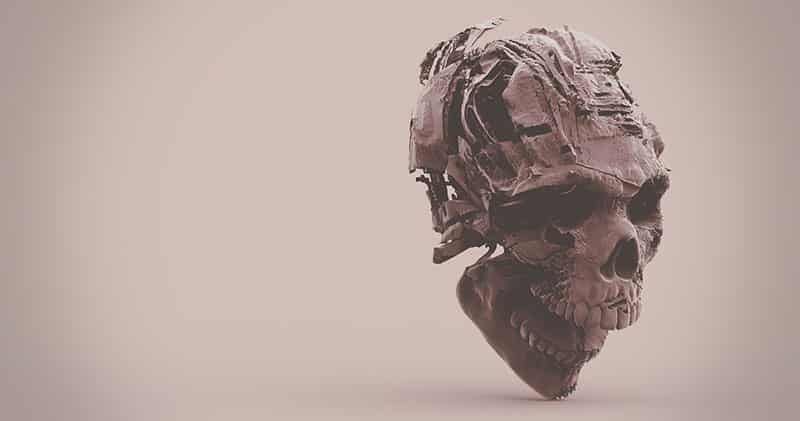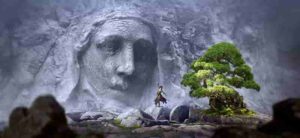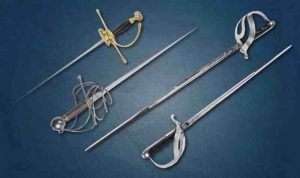Monks who follow the Way of Mercy in Dungeons and Dragons 5e blend medical knowledge with martial prowess. Thematically, this character is an oddball, blending characteristics of a European plague doctor with a Shaolin monk. However, I can appreciate new angles on old concepts. Plus, I have a new imagining of monk abilities like Stunning Strike, Purity of Body and Ki manipulation.
When building a monk Way of Mercy in DnD 5e, consider the following:
- Try a kenku or goblin race.
- Monk basics: Martial Arts, Ki, Unarmored Defense
- Way of Mercy techniques: Implements of Mercy, Hand of Healing, Hand of Harm…
- Blend higher-level monk abilities with Way of Mercy.
Try a kenku or goblin race.
For this oddball character, I’ll want to lean into Dexterity, Wisdom and a weird nature.
Kenkus are small, flightless raven-like characters with a +2 Dexterity/+1 Wisdom ability score bonus. Abilities like Mimicry and Expert Forgery give the kenku a trickster vibe, especially because I can only communicate with noises. I’ll naturally gain 2 bonus proficiencies in Acrobatics, Deception, Sleight of Hand or Stealth. Plus, I’ll choose a raven mask like the plague doctors used to wear for added flavor.
A goblin version of this monk would revel in the necrotic damage, reluctantly healing friends as needed. Goblins receive a +2 Dexterity/+1 Constitution bonus, along with Fury of the Small and Nimble Escape. Once per rest, Fury of the Small grants me extra damage to creatures larger than me equal to my level. Nimble Escape gives me the Disengage or Hide action as a bonus action on each of my turns—a fantastic skill for monk combat.
Monk basics: Martial Arts, Ki, Unarmored Defense
At early levels, I’ll gain my basic monk features: Martial Arts, Unarmored Defense, Ki, Unarmored Movement and Deflect Missiles.
Level 1 gives me Martial Arts and Unarmored Defense. Martial Arts adds an unarmed strike as a bonus action when I attack with monk weapons. This means simple weapons and short swords, which I’ll probably choose the latter—though nunchucks always sound fun. My attack damage with the unarmed strike is 1d4 + Dexterity. Along with this attack feature, I’ll gain Unarmed Defense, which adds my Dexterity and Wisdom modifiers to 10 for my AC instead of armor. I should get 16 or 17 using this method.
Then, level 2 grants me my Ki abilities and Unarmored Movement. Now, I gain 10 extra feet of movement when I’m not wearing armor and Ki points for special abilities. I’ll gain an amount of Ki points per day equal to my monk level. Spending these Ki points gives me a choice of 3 abilities when I begin:
- Flurry of Blows: Make an extra unarmed attack for 1 Ki point.
- Step of the Wind: As a bonus action, I can spend 1 Ki point to Dash or Disengage. Plus, my jumping distance is doubled.
- Patient Defense: Spend 1 Ki point to take the Dodge action as a bonus action.
Tip: Don’t forget to save Ki points for Patient Defense and Step of the Wind.
Dedicated Weapon (Tasha’s Cauldron of Everything) grants me access to another type of weapon outside the normal monk weapons. I can focus my Ki into 1 simple or martial weapon. I must be proficient with the weapon and it must lack the heavy and special properties.
Related Posts:
Guide to Building a Monk Way of the Shadow: DnD 5e
| Guide to Building a Bard College of Lore: DnD 5e
|
Level 3 Basic Monk Abilities.
As I gain my Monastic Tradition at level 3, I’ll also gain Deflect Missiles and Ki-Fueled Attack.
Deflect Missiles gives me the ability to reduce projectile damage by 1d10 + Dexterity modifier + monk level. If I reduce this damage to 0, I can catch the missile and throw it back as a ranged monk weapon for 1 Ki point.
Ki-Fueled Attack (Tasha’s Cauldron of Everything) gives me the option to make an attack as a bonus action. This attack comes after any action and can use a monk weapon or martial arts.
Way of Mercy techniques: Implements of Mercy, Hand of Healing, Hand of Harm…
Level 3 transforms my role and abilities quite a bit as I lean into the plague doctor vibe. Sure, I’ll still be the kung fu guy, but now I have implements and techniques learned through the study of medicine.
Implements of Mercy (level 3) grants me proficiency in Insight and Medicine. Plus, I’ll gain a special mask to cover my face. I mentioned the raven example before with the kenku build. However, other mask examples include a skull, a laughing or crying visage or even blank. The skull mask sounds like a great idea for the goblin build.
Hand of Healing (level 3) is a technique I can use to heal an ally equal to my Martial Arts die (1d4 at level 3) + my Wisdom modifier. I can use this feature with Flurry of Blows without spending an extra Ki point, meaning I can smack a bad guy once and heal a friend right after.
Hand of Harm (level 3) does the opposite—dealing 1d4 (Martial Arts die) + Wisdom modifier necrotic damage for 1 Ki point. I can trigger this move whenever I make an unarmed attack. The idea is that I use my medical knowledge for devastating strikes.
Higher-level Way of Mercy abilities
Physician’s touch (level 6) increases the effectiveness of my Hand of Healing and Hand of Harm. When I heal an ally, I can also heal disease, paralysis, blindness, deafness, poison or stunned conditions. On the other hand, I can leave a foe poisoned when I deal damage with Hand of Harm.
Flurry of Healing and Harm (level 11) cranks these abilities to the next level. When I spend a Ki point for Flurry of Blows, I can use my Hand of Healing on each blow. Plus, I can now use my Hand of Harm with Flurry of Blows without spending an additional Ki point. However, I can only use this effect on one of the unarmed blows.
Finally, Hand of Ultimate Mercy gives me the ability to raise the dead—if they died within 24 hours. Touching the creature, I spend 5 Ki points to bring it back to its feet. I then heal the creature for 4d10 + Wisdom modifier HP.
Overall, I have options. I can either lean into Hand of Healing or Hand of Harm for a given situation, making this monk highly versatile. Naturally, I’ll take a support role in combat, adding damage and working closely with the tank of the group and other melee characters.
Related Posts:
Guide to Building a Bard College of Swords: DnD 5e
| Guide to Building a Drunk Monk: DnD 5e
|
Blend higher-level monk abilities with Way of Mercy.
As I level higher, I’ll continue to gain a whole list of monk features. These abilities range from maneuverability to combat to personal health. Therefore, some of the natural monk features fit my overall theme. Some of my favorite monk abilities at higher levels are Slow Fall, Stunning Strike and Evasion.
Slow Fall (level 4) reduces the damage I would take from a fall by 5 X my monk level. Of course, this ability can help me survive traps. However, it especially comes in handy at level 9—when my Unarmored Movement upgrades and I can move up walls and vertical surfaces.
Stunning Strike (level 5) interrupts the Ki lifeforce inside my opponents, stunning my opponent after a melee weapon attack. The creature will have to make a Constitution saving throw or remain stunned until the end of my next turn. Now that I’m an expert in medical science, this stunning effect can look different in gameplay—at least as far as I imagine the technique.
Evasion (level 7) gives me the ability to fully dodge an area-of-effect blast such as dragon breath or the fireball spell. Now, instead of taking half damage on successful Dexterity saving throws, I take 0 damage. Remember, this doesn’t automatically dodge the effect.
Higher levels grant me immunity to poison and disease (Purity of Body) and the inability to be magically aged (Timeless Body). Plus, Stillness of Mind will help me end a charm or frighten effect and Diamond Soul gives me proficiency in all saving throws. Therefore, the monk will be a steady backup as the monsters and magic becomes more powerful.





